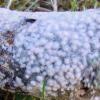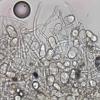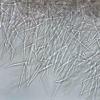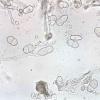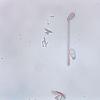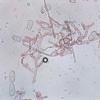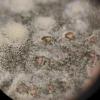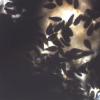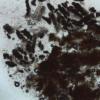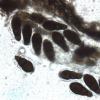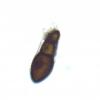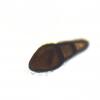
04-11-2025 09:07
Hello.A suspected Hymenoscyphus sprouting on a thi

04-11-2025 12:43
 Edvin Johannesen
Edvin Johannesen
Hi! One more found on old Populus tremula log in O

03-11-2025 21:34
 Edvin Johannesen
Edvin Johannesen
These tiny (0.4-0.5 mm diam.), whitish, short-stip

28-10-2025 15:37
Carl FarmerI'd be grateful for any suggestions for this strik

03-11-2025 16:30
 Hans-Otto Baral
Hans-Otto Baral
Hello I want to ask you if you have found this ye
On 5 August 2022, a friend gave me a piece of a branch of Ulmus (13 cm long, 2.5 cm in diameter) covered with an anamorph. Under those white/pink spots, the bark was covered with green algae and lichens.
The conidia with 1 sept (slightly off-centre and slightly contracted there) have the following dimensions: 20.3 - 24.5 × 10.6 - 12.7 µm; Q = 1.8 - 2.2 ; Me = 22.5 × 11.6 µm .
When wiping off those downy spots I found white bumps in the bark, under which were black perithecia with 1 ostiole that contained very dark spores with following dimensions:
43 - 55.5 × 18.6 - 22.6 µm; Q = 2 - 2.7; Me = 50 × 20.9 µm.
Due to the age of the branch, the prevailing dryness and heat, the material to be examined was in poor condition. With the key of ME Barr Mycotaxon Vol XV 1982 I could identify the ascomata as: Splanchnonema foedans.
My question is twofold: 1) Can someone confirm my determination?
2) Is the anamorph related to S. foedans and can it be identified?
Many thanks in advance,
François Bartholomeeusen

This is Splanchnonema foedans indeed, most probably a new species for Flanders.
The anamorph is Arthobotrys-like.
All the best,
Bernard
Despite the poor condition of the substrate, this is still a good find. Your choice for Arthrobotrys is more than plausible. I'm leaving for a week in the coolness of the coast and will try to elaborate on this find upon my return.
Thanks again for your reaction,
François


